| |
|
|
HISTORIC MILESTONES: A century of reusable spacecraft development | |||||||
|
Visionaries Since the dawn of the space era, its pioneers foresaw the aircraft entering space. In Russia, Tsiolkovsky and Tsander were among the space enthusiasts who formulated early concepts of winged reusable vehicles reaching orbit. With the dawn of the space age, engineers at Sergei Korolev's OKB-1 studied reentry temperatures and required thermal protection for return vehicles of various shapes. On the request from Korolev, during 1958 and 1959, Tsybin's design bureau studied a rocket-launched space plane designated PKA. |
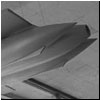 |
|||||||
|
Although Korolev's OKB-1 ultimately favored capsules over space planes, Vladimir Myasishev, a Soviet aircraft designer and the head of OKB-23 in Fili near Moscow researched a slew of winged reusable space gliders. Myasishev had good reasons to experiment with such exotic technology as space gliders. An innovative designer far ahead of his time, Myasishev could not fail to see that rocketry was quickly making strategic aviation -- his main specialization -- obsolete. |
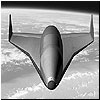 |
|||||||
|
Chelomei started his career as a developer of cruise missiles for the Soviet navy, and, by the end of 1950s, had the ear of the Soviet leader Nikita Khrushchev. Preoccupied with the perceived military threat from the United States, Khrushchev in January 1960 urged Soviet rocket designers to conceptualize an aggressive military space program. Chelomei responded with a number of space projects with the primary goal of supporting and advancing the role of cruise missiles. |
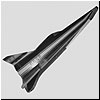 |
|||||||
|
Spiral development | Technical description In 1964, Chelomei (guilty by association with the deposed Soviet leader Nikita Khrushchev) fell out of favor with the new Soviet government. In the wake of the Khrushchev's fall, Chelomei's research into reusable vehicles, was ordered to be transferred to Artem Mikoyan's design bureau. There, this work became a root of the Spiral project. |
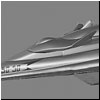 |
|||||||
|
Chelomei revisited his old dream of creating a reusable winged orbiter during 1970s in a bid to develop the Soviet "response" to the Space Shuttle system. However, after the fall of the Khrushchev political fortunes never returned to him, and the prestigious assignment went to his rivals at NPO Energia. |
||||||||
|
During 1970s and 1980s, the USSR developed a winged spacecraft known as Buran (Snowstorm) designed to serve as a "parallel" response to the perceived military threat from the US Space Shuttle. The Buran development was conducted within the Reusable Space System program, or MKS, which included the winged orbiter itself and the Energia heavy-lift vehicle.
|
||||||||
|
MAKS With the fall of the Buran program after a single flight, NPO Molniya, the developer of the Buran's body, tried to move forward with a small version of the reusable orbiter, launched by an Antonov-225 Mriya transport plane. However, the company has never found investors for the project. |
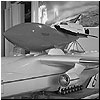 |
|||||||
| HFL-VK In 2001, at the MAKS air and space show in Moscow, the Flight Research Institute, LII, based in Zhukovsky, displayed a full-scale mockup of the winged HFL-VK experimental vehicle designed for test flights at hypersonic speeds. Launched by a Rockot booster, a scramjet-powered unmanned craft would reach a speed of 8-14 Mach and fly at the an altitude of up to 100 kilometers -- faster and higher then most experimental vehicles in development around the world at the time. After launch from Plesetsk, the HFL-VK plane is expected to land with a parachute in the Russian Far East. The program is partially financed by the Russian Aviation and Space Agency, Rosaviakosmos, however, according to LII representatives, the funds were insufficient for active development. |
 |
|||||||
|
During a press-conference at the ITAR TASS news agency in Moscow on February 17, 2004, Yuri Koptev revealed that RKK Energia, the developer of the Soyuz spacecraft, was working on a brand-new vehicle called Kliper (Clipper) since 2000. In the following days, a flurry of reports in the Russian press provided first details on the project. At the time of Koptev's announcement, the project apparently had already evolved through several reincarnations, however from the outset it was a partially reusable "lifting-body" vehicle launched by a medium class rocket. |
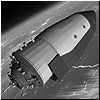 |
|||||||
|
Khrunichev concurrently proposed a new manned spacecraft, loosely based on the company's long-lasting TKS family of space tugs and modules. A partially reusable vehicle could carry up to 6 people was designed for as many as 10 flights. |
||||||||
|
During the work on the preliminary design of the Russian Orbital Station, ROS, in 2023, engineers at RKK Energia proposed a four-step development roadmap for the transport system supporting the future Russian base. The fourth and final step within that strategy envisioned a small rocket-launched space plane. |
 |
|||||||